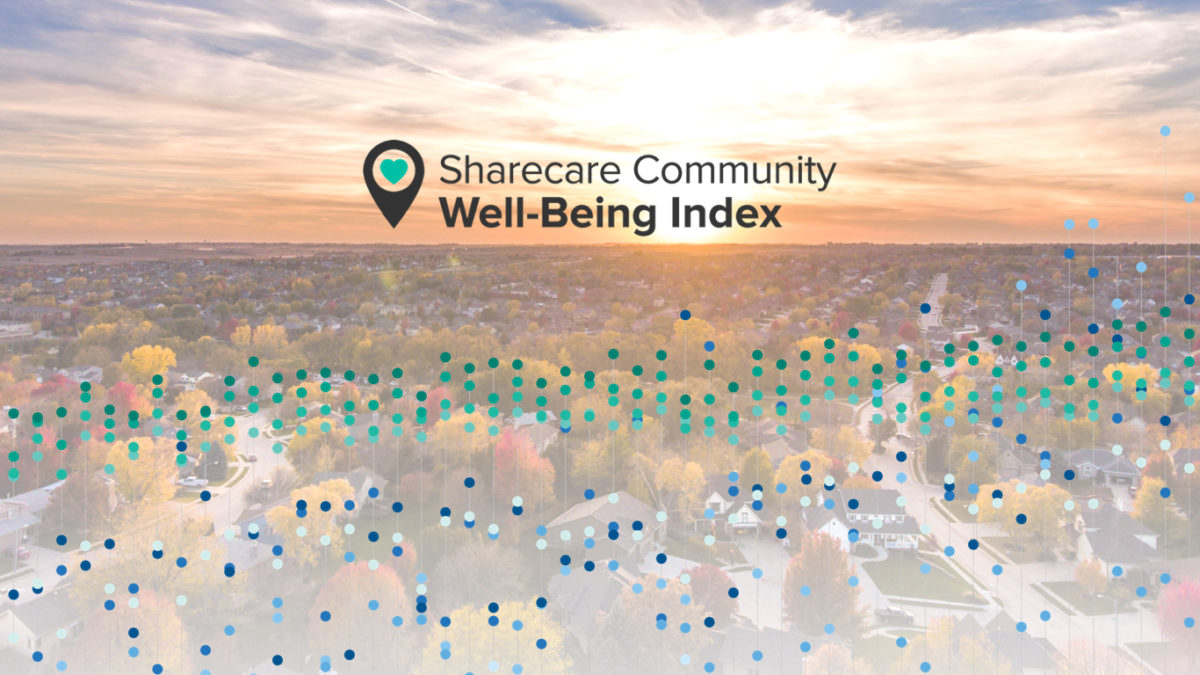What we learned: A study of American well-being in 2020

Last year’s events upended lives around the world, disrupting many of our relationships with what was once “normal.” In the U.S. alone, hundreds of thousands of individuals were impacted by COVID-19, with the most vulnerable among the hardest hit. Even among those who were spared by the virus, the compounding effects of the pandemic virtually left no one unaffected — economically, emotionally, and physically.
Throughout 2020, Sharecare and the Boston University School of Public Health (BUSPH) collected over 450,000 digital surveys and measured more than 600 social determinants of health (SDOH). The data amassed over the course of the year provides an invaluable view into Americans’ well-being through five interrelated sub-domains of health, offering context on the relationships between our health and the environments in which we live, work, and play.
Our findings were published today, revealing key regional and national trends tied to well-being, COVID-19 burden and resilience, and the 2020 U.S. presidential election.
- Collectively, Americans managed to “weather the storms” of 2020.
The turmoil caused by COVID-19 is unmistakable, having claimed the lives of more than 577,000 Americans at the time of this publication. The ripple effects of the pandemic as well as societal reckonings with racial inequities and a divisive presidential election reached everyone in some way; however, results from the Index suggest Americans demonstrated resilience amid these challenges.
Nationally, overall well-being held steady from 2019 to 2020, even increasing slightly. Contributing to this increase were improvements in key areas of well-being: physical, community, purpose, and social. On a scale of 0 to 100, where 0 represents the lowest possible score and 100 represents the highest, physical well-being increased from 60.7 to 65.3. Positive trends in community, purpose, and social well-being each lifted by 2.6, 3.8, and 7.0 points, respectively.
Sharecare’s Community Well-Being Index was not the only large-scale study to find resilience amid the challenges of 2020. The World Happiness Report, compiled annually by the United Nations Sustainable Development Solutions Network, found that while emotions changed at the beginning of the pandemic, longer-term life satisfaction was less affected.
- Financial well-being suffered.
While individual well-being was stable in a number of areas, it suffered in one sub-domain: financial well-being. Compared with 2019 results, Sharecare’s Community Well-Being Index identified a national decline in financial well-being, defined as the ability to manage one’s economic life to increase financial security and reduce stress. Financial well-being is not synonymous with income, however a mismatch between income and expenses can cause it to decline.
The 2.1-point decrease in financial well-being came amid economic uncertainty that led to the temporary or permanent displacement of tens of millions of workers. The sudden loss of income undoubtedly affected many Americans’ ability to manage their finances.
- SDOH are more resistant to change.
The Index consists of five statistically derived sub-domains of social determinants that carry the greatest explanatory power for key health outcomes.
Sharecare’s 2020 analysis found relatively little movement in these areas compared to 2019. On one hand, this is not surprising since SDOH are structural. On the other hand, this should serve as a reminder of the time and commitment necessary to improve this half of the community health equation, which has contributed to the disproportionate impact of COVID-19 among those who identify as Black, Indigenous, or People of Color (BIPOC) in the U.S. A critical component of successful population health initiatives (such as Blue Zones Project by Sharecare) is the adaptation of built environments to make healthy choices easy.
- Well-being performance aligned with COVID-19 measures across states.
By comparing Sharecare’s 2020 Community Well-Being Index state rankings and scores with COVID-19 incidence rates and mortality, we found that the states in the top quintile saw more than 20% lower incidence rates on average and in some cases had as much as a 50% lower death rate.
These same states also outperformed their bottom-ranked peers in financial, physical, and social well-being, and achieved higher rankings across economic security and healthcare access, creating a possible buffer against COVID-19 cases and deaths.
- Future community analyses will complete the picture.
A national Community Well-Being Index dataset consisting of more than 450,000 responses and representing 99.9% of U.S. counties is ripe for further analysis. In fact, much of the Index’s value resides in the uniquely granular local analyses that it makes possible.
In the coming months, Sharecare will take this research to the next level by examining community well-being across more than 300 metropolitan statistical areas and 99.9% of U.S. counties. These explorations will uncover new statistically significant trends and make sense of the complex, but enlightening interplay of factors shaping well-being in our own surroundings.